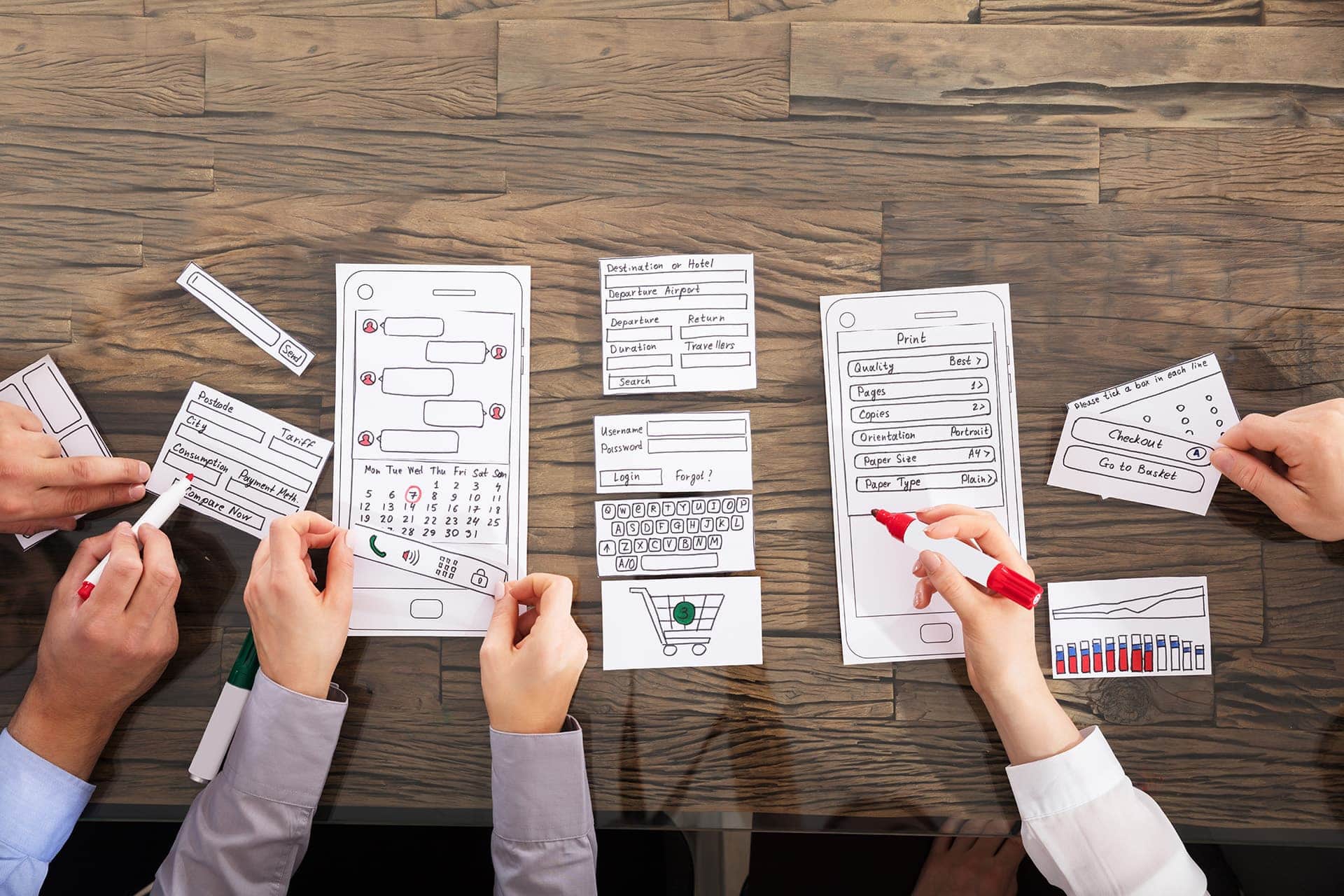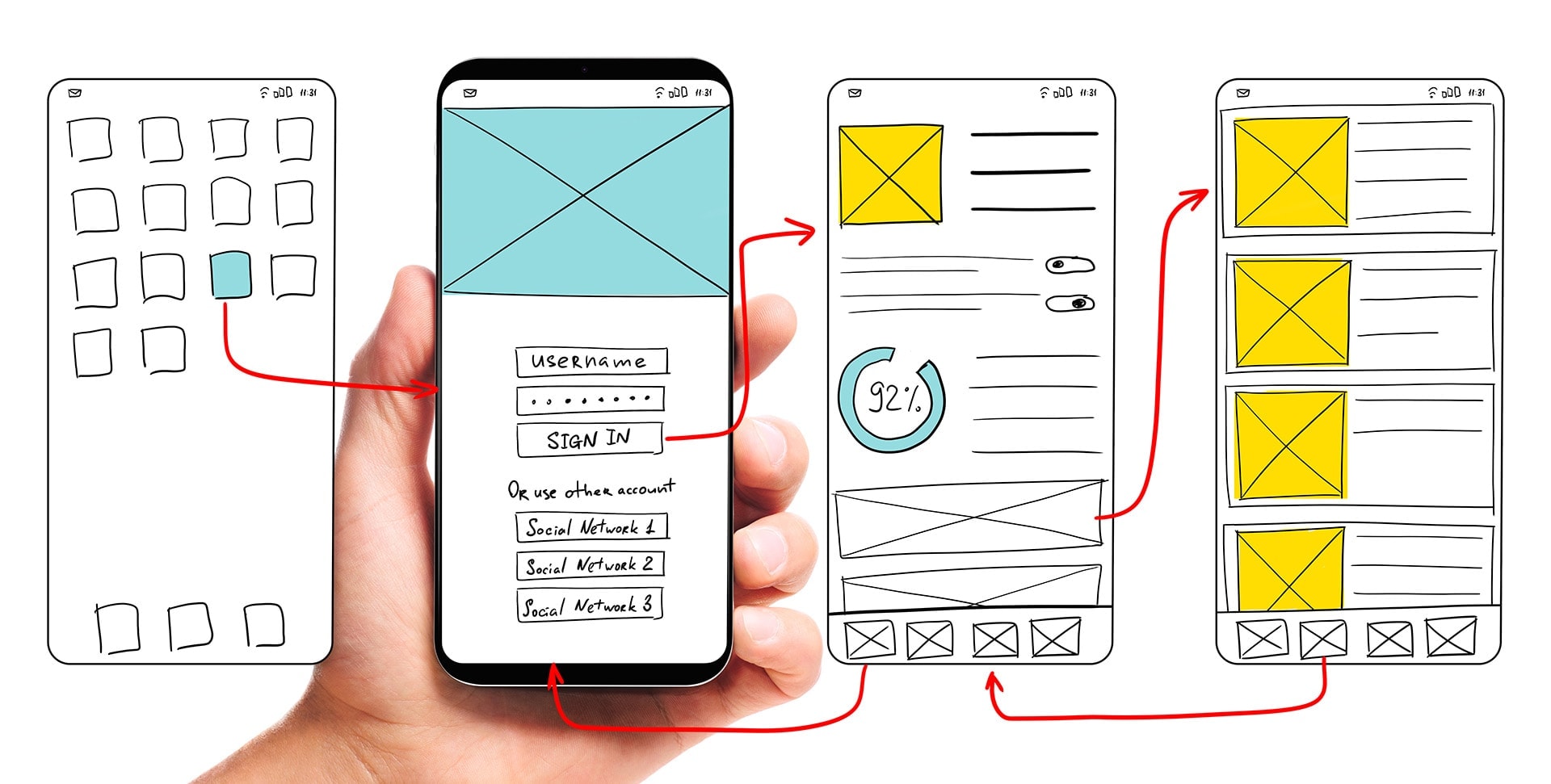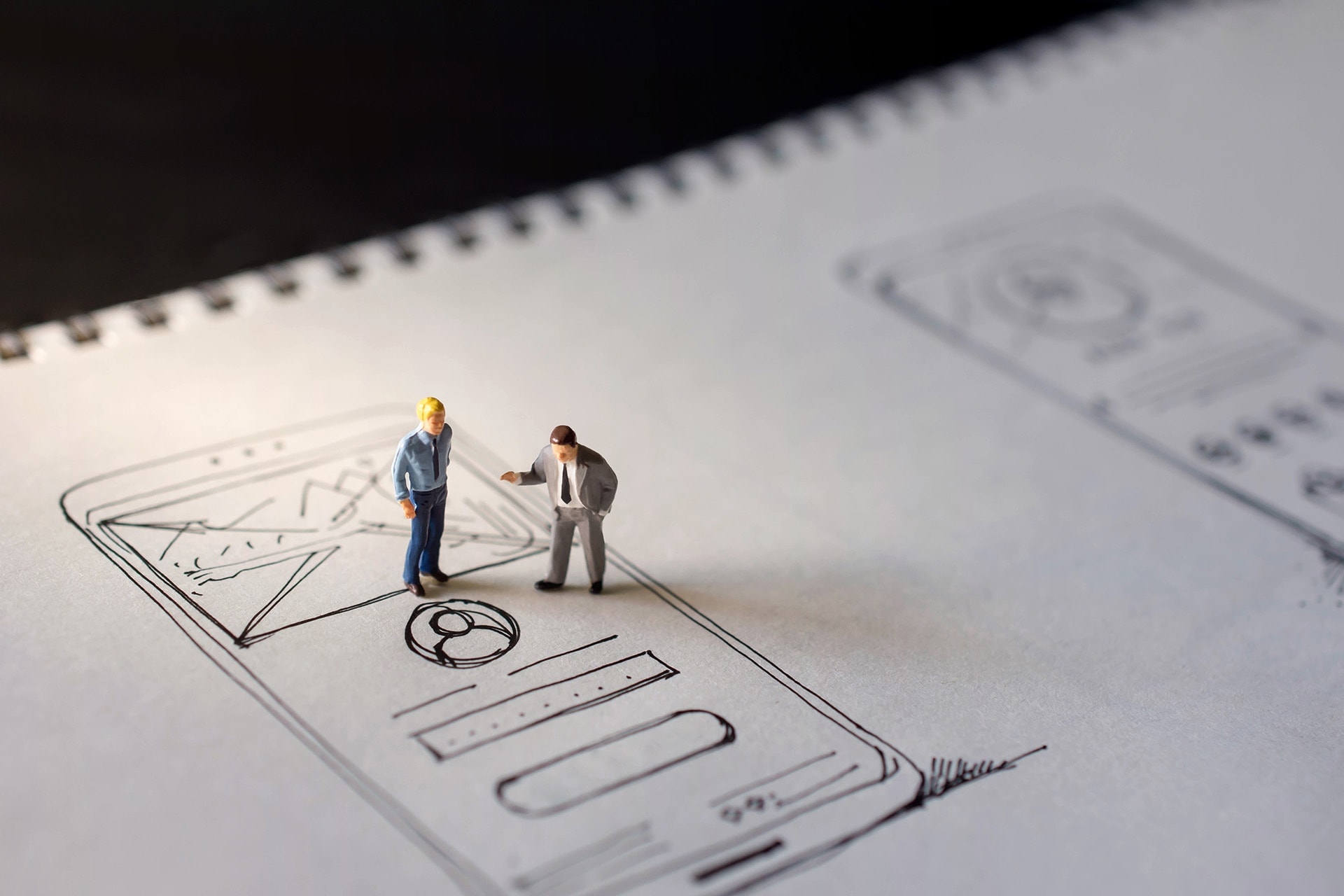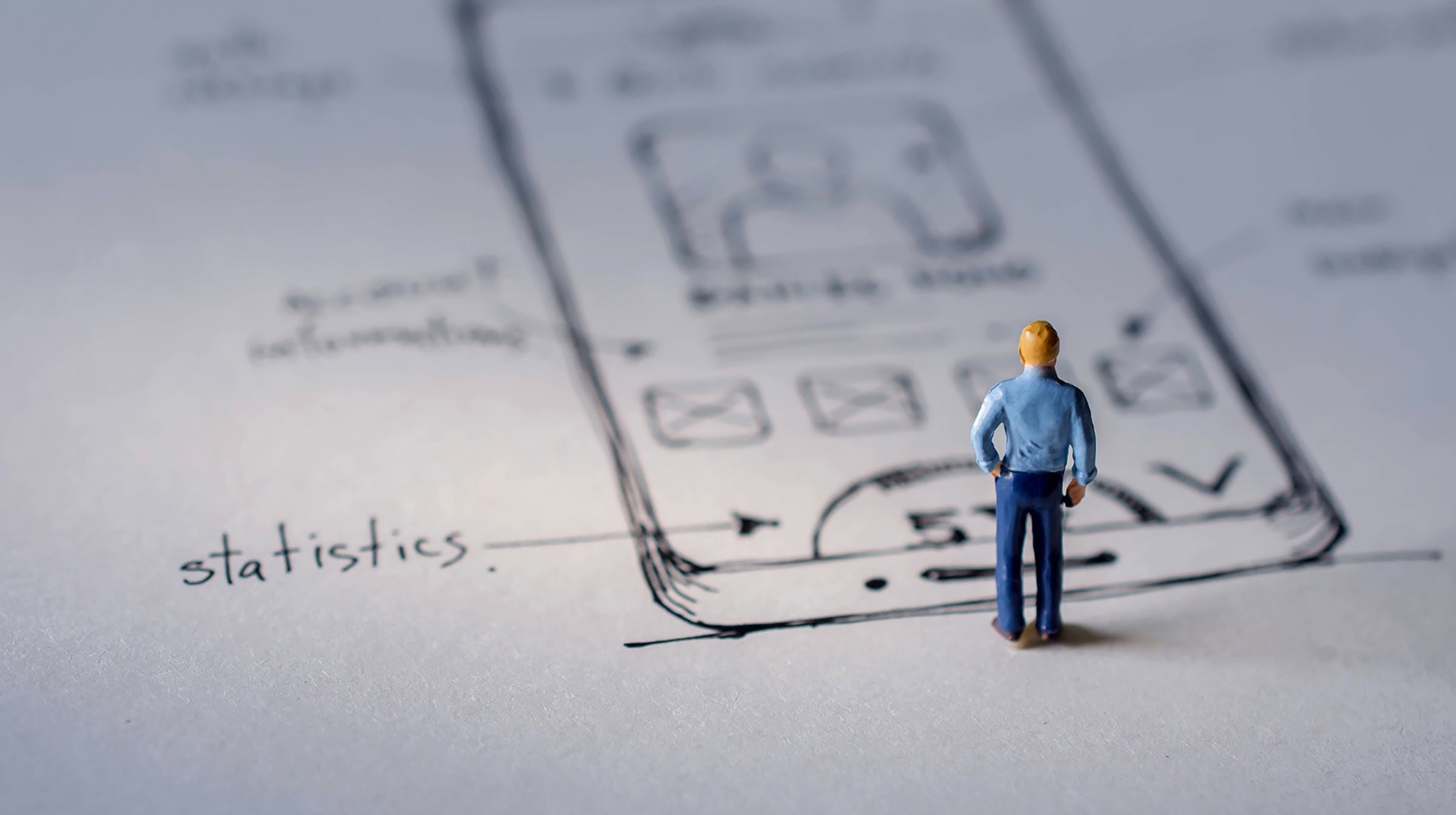What are user personas?
User personas are important in helping you design your product to meet the needs of your users. They are fictitious characters used to represent a real target audience. They are used to summarise and communicate research about that specific audience in a succinct and digestible way.
A user persona will have a set of real-world and relevant data associated with it, such as age, gender, job type, family, marital status, financial status, personality traits, motivations, goals and more. Although they are hypothetical the attributes of a persona should be based on real-world data in order to accurately reflect the thoughts, feelings and intent of that audience.

Why do we need user personas?
We create user personas as part of user experience design. They help us understand a typical user’s needs and desires which in turn helps us build more successful products and solutions. It doesn’t matter if you are developing a website, designing a new smartphone or building a new supercar, you need to understand who will be using your product. You need to understand what problems your users have and plan your product to solve those issues. Alternatively, you can find out what your users desire, what their emotional drivers are and target those as features of your product. Either way, you have to know what will influence and motivate your users. Personas provide the information to help us understand this.
Personas also act as mental anchors for your product team, providing memorable user types which your designers and developers can use to make informed design decisions. When creating new products there is often a lot of data fed into the creative process. It can be hard to see what is truly important and what isn’t. Personas help focus and condense this data into recognisable sets, which can be managed and referenced.
Conflicts can be averted when designs are user-centric. If two features of a product seem in conflict with each other, generating a persona scenario (more on this later) will allow the design team to test against the predicted reactions of their target audience. They help you to figure out the most important design elements to focus on, whilst dropping other non-essential features.

What data should user personas contain?
Depending on the complexity of your project and the depth of your research, there is a range of data which your personas might contain. The following are some of the core attributes your personas should have.
Name
Give your persona a name. This allows you to easily reference personas and their representative audiences throughout the project lifecycle. However, be careful what name you give as these can lead to generalisations which may be inaccurate. For example, if you give your persona a real-life name such as Peter, your team may assume that this persona only represents male users. You could use a name such as Alex or Sam for non-gender specific groups.
Equally, titles instead of names such as “Seasoned Entrepreneur”, can be too general. Is this persona an entrepreneur of older age or an entrepreneur of experience? If the latter, is that experience in one longstanding business or multiple businesses?
Always carefully consider your persona names to ensure they accurately reflect the user group you are representing while not applying any preconceptions or bias.
Photo
Give your persona personality by adding a photo. Follow the same rules here as you would for your persona’s name – if your persona is a construction worker, for example, showing an image of them wearing a suit whilst sat in an office would be misleading. Equally a ‘student’ persona might be a student of dance, or design, or mathematics, so ensure the photo depicts the correct characteristics, based on the additional information you have such as description, job roles or aspirations.
Summary Quote
Depending on the complexity of your project and the depth of your research, there is a range of data which your personas might contain. The following are some of the core attributes your personas should have.
Demographic Profile
The demographics information needs to be based on your research as this is where the actual data from your audience starts to appear. This section will contain subsets of data covering personal and professional background, the user’s environment and psychographics.
Personal Background
Fundamental attributes such as age, gender and ethnicity fall into this sub-set. Education level and family status are also useful attributes to record.
If we take Alex as our example from earlier, their personal data might be:
Alex, 41 years old, male, married with two children, masters degree in Digital Graphic Design.
Professional Background
This subset contains details such as job title, salary and training.
Alex works full-time as a Creative Director at a London-based Digital Design Agency, earning approximately £80,000 a year. Alex has won awards for Best Campaign 2019 and has had work published in PhotoShop magazine.
User Environment
This subset represents the physical, technological and social context of the persona. This allows us to answer questions such as; where does Alex like to spend leisure time and who with? What devices does Alex use most often? Does Alex work mostly in the office or remotely? How does Alex collaborate with other team members?
Alex’s profile might look like this;
Alex works mostly in the office with approx 30% of his time working from home on a laptop. He uses his iPad to check and respond to emails on his commute. Alex’s team uses Slack and Trello to communicate and manage projects regardless of team location.
Psychographics
These are the emotionally driven attributes of a persona. Motivations, attitudes, interests and importantly pain points are included here. A psychographic profile helps you to understand how and why an audience behaves a certain way.
If we imagine we were building a new event booking platform, we can include important psychographic information such as:
- Alex is a member of a group of 30 agencies who regularly meet and run internal events for the benefit of all members.
- As a long-standing member Alex has been asked to find a new venue for an inaugural conference.
- Favours to use apps on mobile over phone calls.
- Prefers intimacy over grandeur.
- Likes to receive a personal experience.
- Is happy to let an expert guide him as long as he has control over some key decisions.
This information would allow us to focus our platform and design features which would allow the user to make choices on venue size, room type and customisations when making a booking via a mobile app.
The Demographic profile helps us to develop empathy when investigating the goals of our audience. Empathy is key to producing successful products which people actually use.
User Goals
The goal of a persona is the motivating factor that inspires action. Is it the reason they act and react the way they do and is also the path to building a successful solution. It is two sides of a coin; one side asks the question ‘what do users want?’ with the answer being ‘how does your product satisfy the user goal?’
In Alex’s case when using your new event booking platform, his goal might be;
To use his mobile to book an intimate space in which hold seminars, to be able to choose the lunch menu from a recommended list but have all technical aspects and staffing managed by the venue team.
Scenarios
With a collection of user personas, your design team can query planned features of a new product and predict how an audience might react. Setting real-world scenarios and playing them out for a persona can present answers to design questions. You analyse how your product would be used by your target audience in context to achieving their goals.

How do you define user personas?
Hopefully, now you have a better understanding of what user personas are, why they are useful and what data they present. So how are they created?
User personas can be created in a range of ways and there are lots of methods but all involve questioning real people and gathering data.
Interview and observe
The first step is to conduct user research to collect as much knowledge as possible about your target audience’s motivations and behaviours. Where possible you should perform high-quality interviews of actual people within your target group. Obtain observational data on how users act in certain scenarios using analytics, statistics and hands-on workshops. The most accurate personas are based on real data so make sure you gather data from a sufficient number of people, as this is important for the next stage.
If you cannot interview real individuals due to time or budget constraints, it is still possible to create user personas – simply use the data you already have, the facts you already know, about your target audience. Use analytics data for web usage, customer services data such as customer calls or support tickets. It may not give you a true real-world representation but acts as a sufficient placeholder until more worthy data is available to you.
Whatever your source of data it’s important to make sure you do not create generalisations or stereotypes. Purely made-up personas without any basis in fact can actually be damaging to the design process and the ultimate success of the product.
Find patterns
The next step is to look at your data closely. You need to identify patterns in your data which will allow you to group users into personas. It’s these personas that represent the entire group as a whole.
If you are able, group users by behaviour or motivation as this tends to lead to a stronger profile and better representation of a group of people. This is important in the design process later on. Grouping by an arbitrary attribute such as age probably isn’t going to be quite as effective as grouping by a behaviour such as ‘always spends £10 or more and shops 4 times a month’.
Create archetypical models
This is where you create your personas. Personas are archetypes which model a specific set of your target audience. With all the data you now possess and the patterns and groupings you have identified you can start to define user personas. These should be assembled around user patterns and habits – assuming you have identified them in the previous step.
The number of personas you create is dependent on the amount of data you collected, the diversity of that data and the complexity of the goals your product needs to satisfy. A product with a single purpose aimed at a very tight niche market is likely to have only a single persona. But a complex product such as a car would be expected to have a much broader target audience and therefore much larger pool of user data from which to generate multiple personas. Typically 3 or 4 personas is enough for complex projects.
It’s advisable to create a primary persona in cases where you have more than one. This gives you a lead persona to focus on thus making your product most relevant to them. Other personas form a secondary and possibly tertiary tier of personas to accommodate in your design process.
The documentation for each persona will contain the data structured in a way that is easy to read and understand. This is normally in the form of a single page. The contents will be derived from the core attributes as described previously, such as name, photo, demographic profile and goals. You may wish to include other information if relevant such as favourite brands, purchasing habits and more. Just make sure the data is always relevant and accurate.
Create user-centric scenarios
Personas themselves have no intrinsic value beyond distilling data about your target audience. It is only when a persona is subjected to scenarios that we are able to gain real benefit.
Here you define a number of specific user scenarios related to your product or service. These situations will describe a user pain point or motivation and an associated action. The action should represent an interaction with your product and therefore produce a hypothetical result which you can analyse against your current design. This allows your design team to refine the offering in order to better satisfy the user’s goals, resulting in a more successful product.
Team approval
You now have your tools, so it’s time to pass them around the key project stakeholders to gain approval before your design team can start to use them. Everyone involved with a project should understand the value in the personas and be positively invested in them. Only then can they be used with success within a design process.
Each member of the team should be familiar with your personas, particularly the primary persona if you have more than one. A considered and well-crafted persona is almost like another member of the team. Eventually, you’ll find team members start to discuss them like they were real people.






